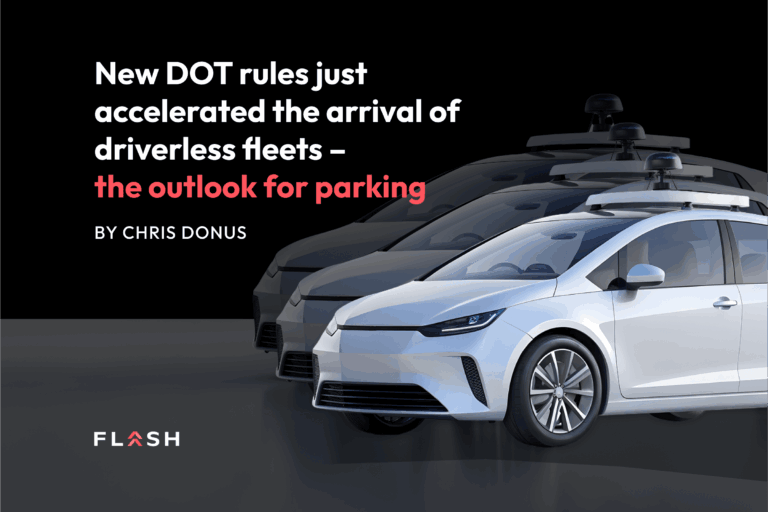I revisited a bookmarked headline this week: “DOT and NHTSA unveil an Automated Vehicle Framework.” Buried in the policy language is a signal that’s easy to miss but impossible to ignore – Washington is officially moving the goalposts closer for autonomous vehicles.
Starting June 16, AV operators will have five days – not one – to file incident reports. Domestic AV makers now get the same fast-track exemptions once reserved for imports, and NHTSA’s promises to “remove unnecessary regulatory barriers.” The clear message is the federal government wants commercial AVs on U.S. roads sooner than later.
Core insight: Parking real estate poised for driverless fleet staging
When vehicles can drop themselves off, they still need somewhere to sleep, charge, and queue for the next ride. That “somewhere” is secure, digitally-enabled parking real estate. With the new federal framework’s emphasis on rapid deployment, we can expect the following developments:
- Fleet staging will consolidate: Instead of scattering curbside, autonomous cars will favor hubs with reliable L2/L3 charging, camera-based access, and 24/7 oversight.
- Data becomes the ticket in: Fleets will choose assets that can relay real-time availability and pricing back to their dispatch algorithms.
- Experience quality still wins: A driver isn’t behind the wheel, but a passenger is still in the back seat. Fast ingress, egress and guaranteed uptime translate directly into higher ride satisfaction and higher property yield.
Implications for owners, operators, and mobility partners: Ready your facilities now
- Audit your infrastructure: Do your lanes support license-plate or vehicle-ID recognition? Can you flex between gate-down for security and gate-up for throughput without losing revenue?
- Layer EV capacity intelligently: AV fleets skew electric. Shared, reservable chargers with enforcement tech will command a premium.
- Expose your inventory to open ecosystems: Fleets won’t install a proprietary app but will rely on APIs that already talk to their dispatch software. Open beats ‘walled gardens’ every time.
- Capture and capitalize on the data: Every AV arrival and departure are datapoints you’ll be able to use to inform and predict pricing and maintenance.
Looking ahead: Staging agreements on the horizon
Now that regulators have opened the gate, pilots will follow. I expect to see large operators signing multi-year staging agreements within the next 12-18 months, starting in Sun Belt markets where AV testing is already commonplace. Early movers will lock in pricing advantages, shape service standards and write the playbook for the curb and facilities. Our bet? Parking assets that deliver a connected, gate-to-charge-to-pay journey – backed by real-time intelligence – will capture the lion’s share of this coming demand spike. The premium people once paid for “better lobbies” is about to shift to “better landing pads” for autonomous fleets.

